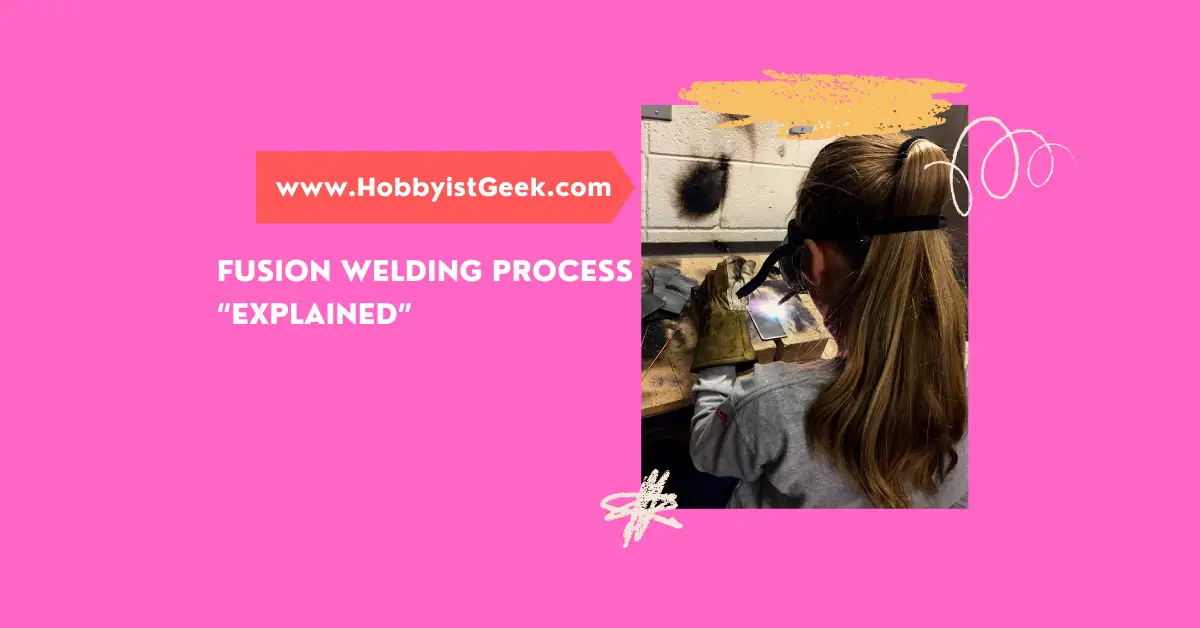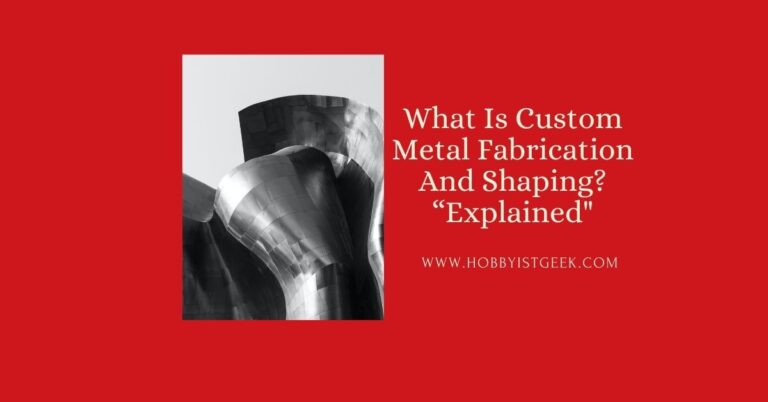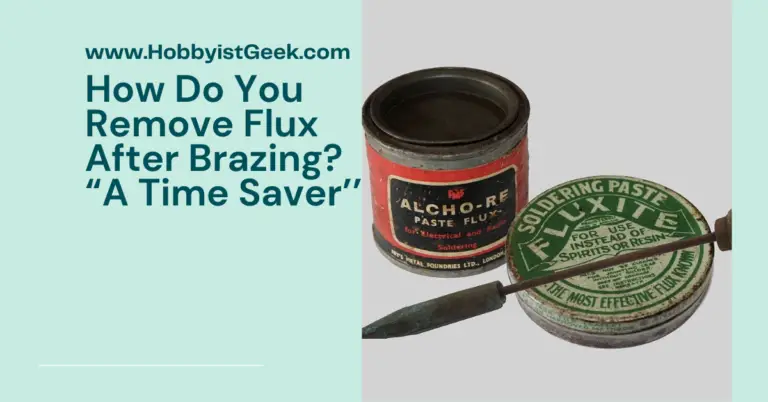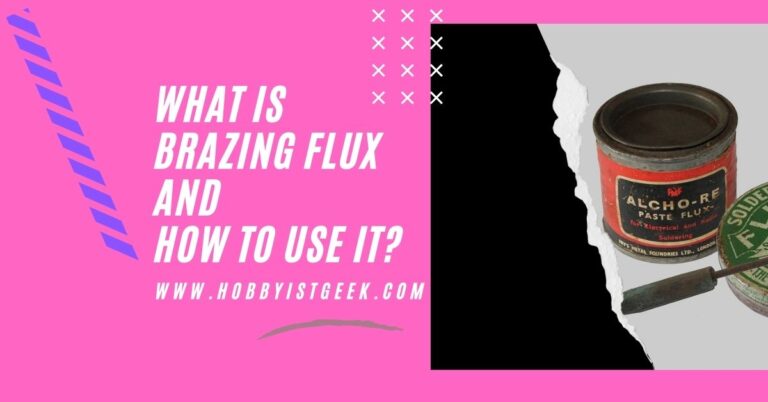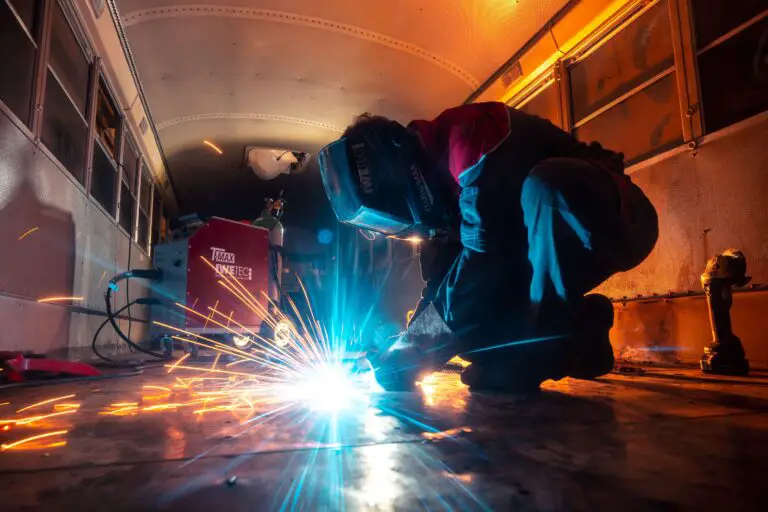What Is The Fusion Welding Process? “Explained”
What Is The Fusion Welding Process? “Explained” is packed with all the information you need.
Fusion welding is a process where two pieces of metal are heated to their melting points to be joined, or fused, together.
When the metals cool down a strong joint is created between the two. Fusion welding can be used for many purposes.
Fusion welding is a fascinating process that is picking up attention as a hobby for people all around the world. In this article we’ll cover everything you need to know about fusion welding, when we finish, you’ll be a true fusion welding expert. So, without further ado, let’s jump right into the action.
What Are The Three Types Of Fusion Welding?
Let’s start today’s article by looking at the different types of fusion welding that we can encounter. There are three different types to cover, so let’s take a closer look at each one of them.
The first and most common type of fusion welding is arc welding.
There are many different subcategories in this type of fusion welding, but arc welding in general consists of traditional welding by using an electric torch to heat up two metal pieces to the core.
The molten pieces are then joined together to form a strong joint together.
Another form of fusion welding is known as gas welding, this is when you use a handheld torch that uses a fuel gas and an oxygen mix to form a flame.
This can create many different flame types and therefore has plenty of applications, this too is a common form of welding.
The third and final type of fusion welding that we will talk about today is resistance welding.
This contains categories like spot welding, and it involves large amounts of electricity traveling through a small spot to deliver a concentrated burst of energy that is capable of melting and fusing two metals together.
What Are The Basic Principles Of Fusion Welding?
We have now covered the three basic types of fusion welding and how they work, but let’s take a step back and take a look at the basic principles of fusion welding first.
The basics of fusion welding involve a heat source such as a torch or an electric source that creates the necessary heat to melt a piece of metal.
This molten piece can then be fused with another piece, and this bounds the two pieces together when they cool back down. This creates a strong joint between metal pieces and therefore has loads of applications!
What Are The Advantages Of Fusion Welding?
The first question that of course comes to mind when talking about the fascinating process of fusion welding has to do with advantages. Let’s take a look at the advantages of fusion welding.
Fusion welding’s main selling point is of course the strength.
Welds are incredibly strong joints and they can be used for a large variety of different things, (automotive and construction) which makes them versatile and therefore great as a hobby or for practical purposes.

What Is Pressure Welding And Fusion Welding?
Another welding-related term that we often hear is pressure welding. But how does this term compare to the fusion welding that we have so far been talking about? Let’s find out.
Pressure welding is a technique where mechanical pressure is used to form a joint between two metal pieces.
This can be above or below the melting point of the metal. Fusion welding on the other hand involves high temperatures and not a lot of mechanical pressure to form the joint.
Is Spot Welding Fusion Welding?
In the world of welding, we often hear many specific terms being thrown around, and one such term is spot welding. The question we want the answer to is, of course, is spot welding fusion welding? Let’s find out.
Yes, spot welding falls under the resistance welding category and is therefore a type of fusion welding. Spot welding uses a large amount of concentrated electricity to create heat and therefore forms a joint.
Is Forge Welding Fusion Welding?
Another type of welding that we often hear about is of course forge welding. This is another specific welding technique, and once again we were wondering, is forge welding fusion welding? Let’s find the answer to that question.
Let’s jump straight to the answer, forge welding is not fusion welding. Forge welding is also known as pressure welding and it is not fusion welding as the metals are not liquified in forge welding, they are joined through high pressure.
Is Gas Welding Fusion Welding?
The third, and final, type of welding that we often hear when speaking about welding is gas welding.
We have mentioned it before in this article, but it doesn’t hurt to take another look at gas welding and how it compares to fusion welding.
Gas welding is a form of fusion welding. Gas welding consists of a torch being lit using oxygen and a fuel gas, this torch is then used to melt the metal pieces to join them together.
This falls under the category of fusion welding.
Final Thoughts On… What Is The Fusion Welding Process? “Explained”
All in all, fusion welding is a collective term for many different types of welding such as resistance and gas welding for example.
Fusion welding is a fascinating process that is still being used after many centuries. Thank you for reading and good luck with fusion welding!
What Is The Fusion Welding Process? “Explained” informative? If so you will love What Are The Types Of Brazing? “7 Brazing Types Explained”

Frequently Asked Questions
Let’s finish off by looking at some frequently asked questions on the topic.
How many types of fusion welding are there?
There are many different types of fusion welding, but there are 3 main ones, being resistance, gas, and arc welding.
Is fusion welding hot work?
Yes, temperatures are very high when fusion welding.
What is another name for fusion welding?
Butt welding and heat welding are both other names for fusion welding.
Who invented fusion welding?
Fusion welding was discovered by a multitude of different people in the 1900s, but Sir Humphry David invented the electric arc, which is vital for fusion welding.
What are the three zones in a fusion weld?
A fusion weld consists of the fusion zone, the un-melted heat-affected zone, and the unaffected zone.
Sources In MLA Format
20, Posted: By Brian Reed on March, et al. “The History OF WELDING: Fairlawn Tool Inc.” Fairlawn Tool, Inc., 4 June 2021, https://www.fairlawntool.com/blog/history-of-welding/#:~:text=The%2019th%20century%3A%20This%20century,welding%20and%20carbon%20arc%20welding.
“Forge Welding 101: Beginners Guide to Forge Welding.” The Crucible, 15 July 2021, https://www.thecrucible.org/guides/blacksmithing/forge-welding/.
“Us5785775a – Welding of Gamma Titanium Aluminide Alloys.” Google Patents, Google, https://patents.google.com/patent/US5785775A/en.
“What Is Fusion Welding?” TWI, https://www.twi-global.com/technical-knowledge/faqs/what-is-fusion-welding.
“What Is Welding? – Types of Welding Processes.” Bright Hub Engineering, 29 Mar. 2009, https://www.brighthubengineering.com/manufacturing-technology/30578-types-of-welding-processes/.
- Jewelry Making Ideas: Seasonal Crystal Trends That Command Premium Prices - May 31, 2025
- Evil Eye Hand: Unveiling the Mystical Origins and Meanings - February 2, 2024
- Amegreen Amethyst Meaning: Discover the Hidden Magic! - February 2, 2024

